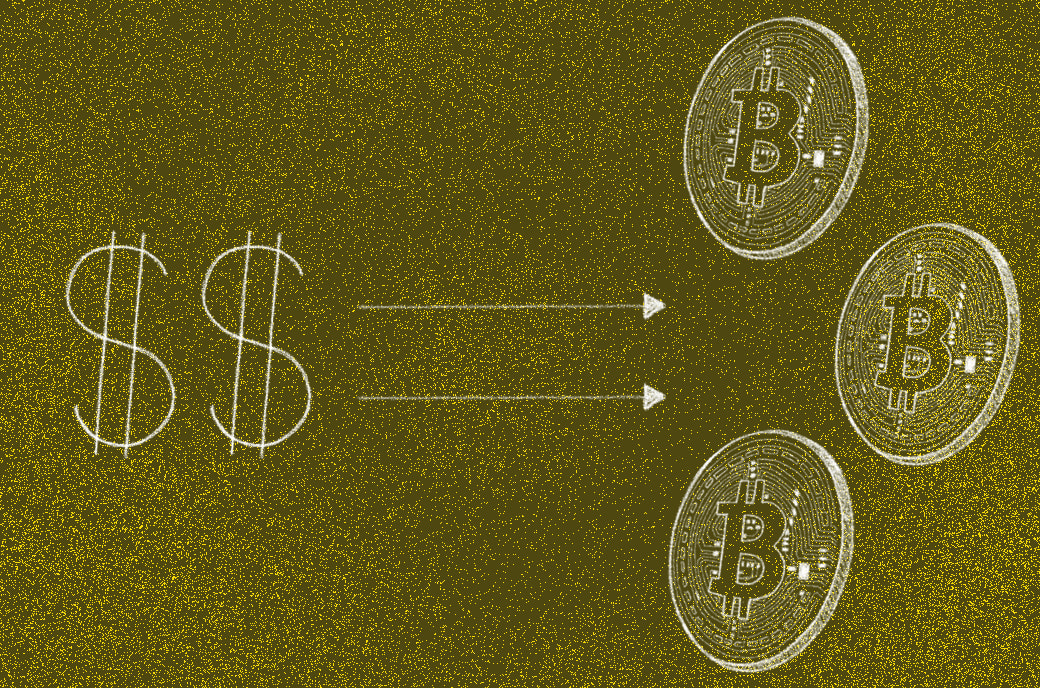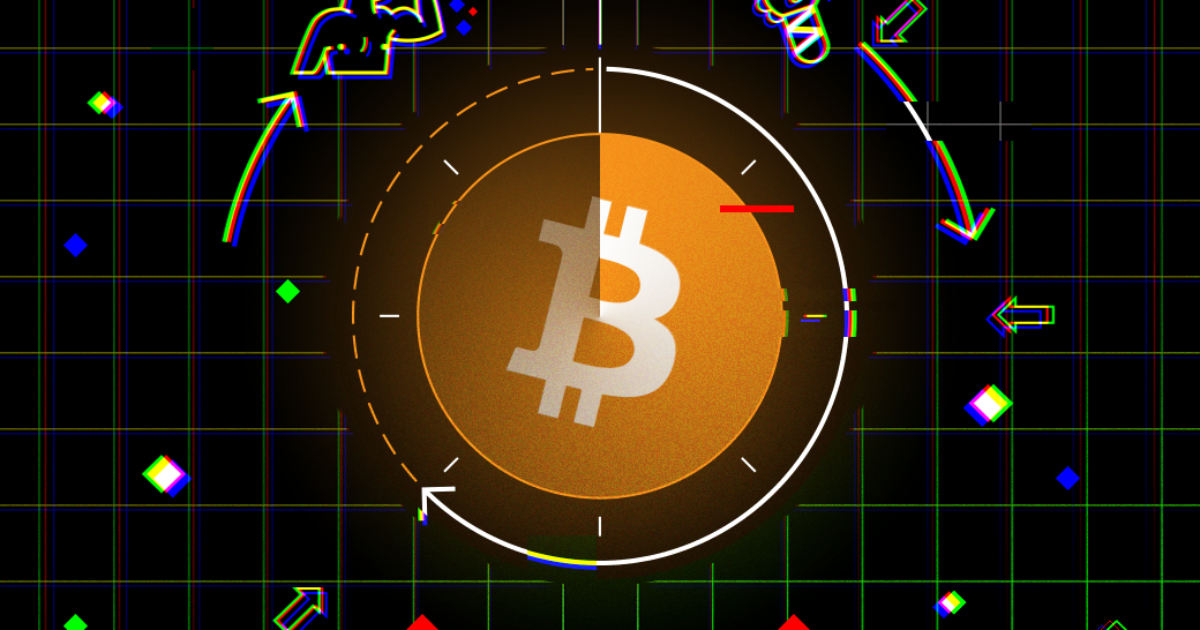The Bitcoin Energy Debate Is A Modern Reprise Of The Gold Resource Cost Debate
The debate over the resource cost of gold is critical in understanding the present-day fixation with Bitcoin’s energy costs.
And the answers remain the same…
Long before we had the Bitcoin energy debate, we had the gold resource cost debate. The contours were similar: the costs associated with gold refining and extraction were a waste; they were too great relative to a mere fiat standard in which notes could be printed for virtually nothing. Why bother with gold, impassive and unwavering in its supply dynamics, when you could have the cheap and highly configurable paper standard instead? The critique hinges on figures computed by economists finding extremely high resource costs associated with the gold standard. Infamously, in his 1951 essay “Commodity-Reserve Currency,” Milton Friedman criticizes the gold standard on these grounds, calculating that 1.5% of GDP would have to be devoted to the production of gold under a full reserve standard, an estimate he revises up to 2.5% in 1960.
Writing in Cato Journal in 1999, Allan Meltzer replicates Friedman’s analysis and, while conceding that Friedman’s estimates are a shade aggressive, nevertheless concludes that “the resource cost of a full commodity standard remains high.”
As George Selgin notes, contemporary economists continue to maintain that a gold standard is “expensive” relative to fiat. Selgin provides the example of Starr claiming in 2013 that “the use of paper or fiduciary money instead of commodity money is resource saving.” The lineup of critics is completed, if somewhat diminished, by the addition of Matt Yglesias reminding us that the gold standard would “impose a cost on the real economy” as the “gold held in bank vaults is gold that is not available for industrial or decorative uses.”
According to mainstream economists, given the relative cheapness of printing paper notes (or digitally printing federal reserve liabilities) a gold-based system is not only unviable from an economic perspective but also a weirdly costly anachronism. Why bother with physical goods when you can print up a synthetic, largely free alternative?
Quite similarly, today the most strident anti-Bitcoin voices fixate on its resource costs — and specifically its energy consumption. As with gold, the critics allege that Bitcoin’s resource burden is not just too high but entirely a waste, because to them Bitcoin offers no perceptible utility relative to other monetary and payment systems. As with gold, the constraints imposed by Bitcoin make no sense to westerners raised on a diet of monetary tinkering and steady debasement. As with gold, hyperbolic projections about future resource costs have come to dominate the debate around Bitcoin (Mora et al., anyone?). As with gold, apparently “cheap” alternative systems — like proof of stake, effectively “fiat” by another name — are held up as costless alternatives. And just like gold, the opportunity costs of the untethered fiat system are not considered in the “resource costs” debate. The costs of the fiat standard go unchallenged while the more explicit costs of gold, and now Bitcoin, are subjected to extreme scrutiny.
The debate over the resource cost of gold is critical in understanding the present-day fixation with Bitcoin’s energy costs. The rhetoric is the same; only the names and the jargon are substituted. Today’s critics talk in calm, worried tones about Bitcoin’s concerning ESG characteristics. This sterile corporate speak is of course a euphemism for the following: “I see no value in Bitcoin and hence consider all costs associated with its production and maintenance wasteful.”
In light of these similarities, let us wind back the clock and consider the gold resource cost debate. It’s a rather delightful contradiction that Bitcoin reaches into the past to propose a monetary order that theorists have long coveted, while relying on new technology: at once a techno-utopian project yet also a reactionary, almost revanchist movement. So, let us consider the history of the Bitcoin energy debate, or its deeper abstraction, the hard money resources debate.
A remarkable paper that makes these similarities evident is Roger Garrison’s 1985 treatise, “The Costs Of A Gold Standard.” Virtually the entire tract could be rewritten with “Bitcoin” substituted for gold and its conclusions would hold. In the paper, Garrison argues that considering resource costs in isolation is irrelevant without a discussion of opportunity costs — that is, the costs imposed by a world without gold. The efficiency of the system is a necessary function of the benefits of the price stability and monetary independence of gold, and its costs cannot be considered without reference to these qualities. As Garrison notes:
“The effectiveness of the resource-cost argument against the gold standard rests on the popular perception that the activities of mining gold, refining it, casting it into bars or minting it into coins, storing it, and guarding it are collectively wasteful activities and the implicit assumption that if the gold standard were supplanted by a paper standard, these activities would cease. But making the implicit assumption explicit is enough to demonstrate its falsity. The imposition of a paper standard does not cause gold to lose its monetary value.
“To believe otherwise is to hold the naive view that the State can repeal the laws of economics. Gold continues to be mined, refined, cast or minted, stored, and guarded; the resource costs continue to be incurred. In fact, a paper standard administered by an irresponsible monetary authority may drive the monetary value of gold so high that more resource costs are incurred under the paper standard than would have been incurred under a gold standard.”
This perspective is elucidating. Whether gold or Bitcoin, in non-totalitarian states, there is no way to reliably inhibit the spontaneous desire of savers to store their wealth outside of sovereign currencies. In 1986, perhaps as a response to Garrison, Friedman hedged his prior position, noting the paradoxical rise in the demand for gold under a purely fiat standard.
“Since the end of Bretton Woods,” he mused, “even the direct resource cost of the gold and silver accumulated in private hoards may have been as great as or greater than it would have been under an effective gold standard.”
You can think of this transition — from the state linking its currency to the commodity, to individuals choosing to hold the commodity directly — as a desocialization of the stability afforded by a gold-backed currency. This analogizes to a town removing its exterior walls and gates, forcing the citizens to erect their own makeshift palisades around their compounds. As sovereign currencies have become more unstable since the dissolution of Bretton Woods — almost precisely 50 years ago today — individual savers have increasingly sought out safety in gold and other hard monies.
In 1999, the monetary economist Larry White applied a critical eye to Friedman’s challenge from the ’50s, questioning Friedman’s assumption of a full-reserve gold world. In a more likely fractional reserve system (such as the ones we have seen in various free banking episodes for instance), gold reserves would account for a single-digit percentage of the money supply, driving down the necessary resource costs of the commodity. This pragmatic assumption reduces Friedman’s resource cost estimates by a factor of 50.
Additionally, White supports the idea that gold still imposes resource costs even if you desert the gold standard. He calculated that the acquisition of gold bars and coins by private individuals has indeed been structurally elevated since we entered a fully fiat standard in 1971. In a counterfactual gold standard world, White argues, we would actually require less gold, less extraction, and hence lower resource costs than we do today.
In our current world of monetary instability, amid a fraying dollar system, both individual savers and central banks have been buying gold at an increasing rate. Russia now holds more gold than dollar-denominated assets in its reserves. According to data from the World Gold Council, the central banks of China, Turkey, India, Saudi Arabia and Mexico have all showed noted enthusiasm for the metal in the last decade. And as interest rates stay low and inflation ratchets up, U.S. debt — now mathematically guaranteed to lose the holder money if held to maturity — has become less attractive as a savings device. Led by China and Japan, foreign governments have been net sellers of U.S. treasuries since 2014. Today, the Federal Reserve holds more treasuries than all other foreign governments combined.
All of this is to say that, despite the assurances of the soundness of the dollar emanating from Washington, individuals and states are taking a new look at non-state monetary commodities. For gold, this additional demand (prompted by an unstable fiat system) imposes a very real resource cost and inescapable environmental externalities. Approximately 131 terawatt hours (TWh) of energy is used every year in gold extraction and mining (Bitcoin clocks in at around 76 TWh). As inflation picks up, and it becomes increasingly clear that the U.S. government must debauch the dollar in order to finance its growing largesse, the appeal of gold, Keynes’ “barbarous relic,” grows in importance.
Yet despite the environmental footprint of gold, few today seriously advocate the banning of gold production. Gold mining is widely distributed worldwide, with the largest single producer nation, China, accounting for only 11% of the new supply. Entrepreneurial gold miners emerge to extract the metal anywhere it is sufficiently dense in the earth’s crust, making global regulation virtually impossible. And gold offers a valid insurance policy against currency debasement — one that billions of individuals worldwide, and an increasing number of central banks, are taking advantage of.
The analogies to Bitcoin should be clear. Much like gold, bitcoin is an asset with non-discretionary monetary supply dynamics; no one entity can control the supply. In Bitcoin’s case, it’s not physical properties that define the rate of production, but a credibly-committed-to supply schedule expressed in code. Like gold, bitcoin is attractive because it is scarce and cannot be debased. Bitcoin also improves on gold in some critical respects — it’s more portable, concealable and transportable. Strong auditability and cheap verification of inbound transactions mean that Bitcoin is less prone to getting captured by large custodians, which helped doom the gold standard; clients can always withdraw and self-custody their coins with little difficulty.
As with gold, Bitcoin users are happy to pay for the “costs” of the monetary system they opt into. The resource costs are not socialized — they are borne solely by holders and transactors. Some externalities exist, but they must be considered relative to the externalities of fiat, which has a disastrous track record. All 56 hyperinflations on record have occurred under conditions of fiat currency; none has taken place on a commodity standard.
Gold mining occurs worldwide, as gold is relatively well distributed in the earth’s crust. Bitcoin mining is as of yet more concentrated, but its prospects for continued dispersion look bright. Mining is highly modularizable, and can take place anywhere that energy is present, even outside of the electric grid. Like a starfish losing an arm, Bitcoin can survive the loss of large portions of its industrial base without incident. China’s recent ban took around 45% of Bitcoin’s hash rate offline, but the protocol itself kept ticking along. As a practical consequence of that ban, Bitcoin has no current dependency on a single state. Since Bitcoin mining is a single market (i.e., the protocol pays the same rate per block to miners anywhere, regardless of location), policymakers banning Bitcoin mining locally effectively subsidize the activity elsewhere. Like gold, trying to globally regulate the asset is a fool’s errand.
Much has been said on the prospects for rendering Bitcoin mining more sustainable, and the industry has been galvanized over the last year. The Bitcoin Mining Council has begun releasing disclosures from constituents. A number of large miners have begun voluntarily disclosing their sustainability, and buying offsets for the remainder. The emergence of flared gas mining is a potent near-term lever which could decarbonize Bitcoin mining. But ultimately, Bitcoin mining should be understood similarly to the gold mining industry: a global industry, composed of thousands of heterogeneous participants. Some of them are accountable to U.S. capital markets and hence more inclined to be transparent and sustainable; but a good portion of hash rate will likely always be opaque.
Understanding the Bitcoin energy debate as the continuation of the age-old debate about the resource costs of non-state money helps clarify the terms. The reason critics fixate on Bitcoin’s energy impact is not its particular rapaciousness — mobilizing against an industry accounting for, generously, 0.1% of global emissions will not solve the climate crisis — but because they dispute its relevance and merit as a monetary good. Similarly, critics railed against the purportedly high resource costs of the gold standard not because gold was too expensive — as demonstrated, fiat has increased the resource costs imposed by the acquisition of gold — but because they resented the monetary discipline imposed by the gold standard itself.
Not once have I encountered a critic of Bitcoin formulating a challenge to Bitcoin’s resource costs in a rigorous and data-backed manner. The challenge, were it to appear, would look something like, “Bitcoin’s kilowatt hours (KWh) consumed (or CO2e emissions) per unit of settled (/stored) value is excessively high relative to the equivalent ratio for Fedwire.”
Bitcoin’s costs are the denominator in the equation of its efficiency — yet the numerator is rarely considered. How often do you hear critics conceding that Bitcoin provides valuable monetary freedom for tens of millions of individuals worldwide, especially those in unstable states, lacking meaningful property rights? And with fiat, the denominator — its deleterious effects on society — is scarcely ever included in the accounting of its own resource efficiency.
Now, if bitcoin becomes the base money in a neo-gold standard, does it pose more of a threat to the earth’s resources than gold ever did? Doubtful. Bitcoin’s annualized issuance rate is 1.7%. Throw in aggressive estimates for fees and you can push that to 2.1%. The issuance component of Bitcoin’s security budget halves every four years, with the next halving due in 2024. Unless fees massively increase, and keep increasing every four years to offset the halvings (they’ve never held at much more than 200 BTC per day for a sustained period), Bitcoin’s security spend will likely decline in bitcoin terms over the medium and long term. (I’m aware that this is a controversial assumption.)
If bitcoin reaches parity with gold, as would be presumably necessary for it to serve as specie in a neo-gold standard system (implying a BTC unit price of $579,000 as of today), Bitcoin’s resource costs would be effectively identical to those of gold. How is this possible? Well it’s an odd coincidence that gold’s issuance rate is almost exactly the same as Bitcoin’s in this current halving regime.
In 2020, gold equivalent to 1.76% of the aboveground stock was mined. The figure has averaged 1.83% over the last decade. In 2020, gold producers collectively raked in $191 billion through mining (before any costs are factored in), a figure equivalent to 0.2% of global GDP. So, even if bitcoin completely supplants gold as the global monetary substrate of choice, it will only match gold’s current resource cost (which again, virtually no one ever complains about). Of course, even in the fever dreams of its biggest fans, Bitcoin isn’t likely to hockey stick to gold parity overnight, so if it takes bitcoin longer than three years to achieve parity, the Bitcoin mining industry will likely never match gold mining in terms of economic significance.
Layer on the fact that Bitcoin mining is effectively a fully synthetic version of gold mining, taking place only in data centers, requiring no diesel, arsenic or mercury, and our digital gold looks distinctly more sustainable than its analog counterpart. Gold extraction and refining is a heavy industry that requires the actual manipulation of physical matter, meaning it can never fully mitigate its carbon footprint. By contrast, to decarbonize, Bitcoin miners simply need to direct green power to their machines — which they are already in the process of doing.
The purpose of this comparison is not to denigrate gold, but to demonstrate bitcoin’s likely lower resource burden, even under the most optimistic scenario. Regardless, gold’s resource costs and ecological externalities — significant though they may be — are clearly worth it. The philosophical divide concerns neither gold nor bitcoin nor fiat; it ultimately reduces down to those who believe that money should be the sole purview of the state, and those who question the state’s monetary prudence and look to alternatives. As with gold’s resource costs, the energy debate is just a metonymy for this more fundamental question.
As for Friedman, he ended up dramatically reversing himself on the resource cost critique later in life. In his 1986 tract “The Resource Cost Of Irredeemable Paper Money,” he points out that fiat has very real costs: namely, the exorbitance of unstable prices and inflation.
“I took it for granted that the real resource cost of producing irredeemable paper money was negligible, consisting only of the cost of paper and printing. Experience under a universal irredeemable paper money standard makes it crystal clear that such an assumption, while it may be correct with respect to the direct cost to the government of issuing fiat outside money, is false for society as a whole and is likely to remain so unless and until a monetary structure emerges under an irredeemable paper standard that provides a high degree of long-run price-level predictability.”
In the paper, Friedman provides a simple example of the resource costs of a fiat regime — the new requirement by firms to hedge foreign exchange exposure. As he notes, foreign exchange futures were virtually unheard of until the link between the dollar and gold was severed. Under the first Bretton Woods system, the dollar was a fixed weight of gold and other currencies were linked to the dollar. Once that tether was broken, economic agents were forced to participate in the foreign currency markets. But few have dared to quantify these costs. He ends the paper with the following entreaty:
“I do not know of any attempt to measure the real resource costs of an irredeemable paper currency and to compare such costs with the real resource costs of a commodity currency. That is clearly a much needed research project.”
Today, 35 years on from his request, and 50 years after the total collapse of Bretton Woods, it might be time to revisit Friedman’s question once again.
This is a guest post by Nic Carter. Opinions expressed are entirely their own and do not necessarily reflect those of BTC Inc or Bitcoin Magazine.









